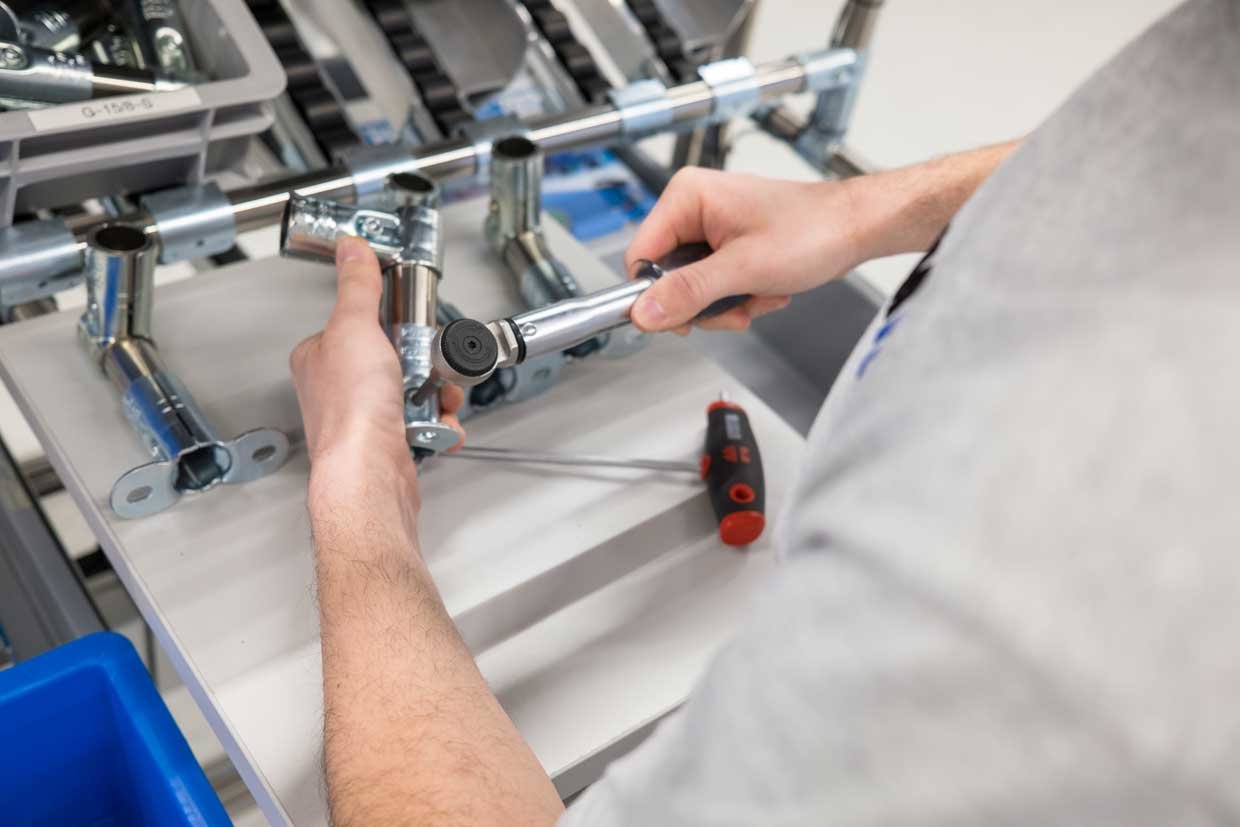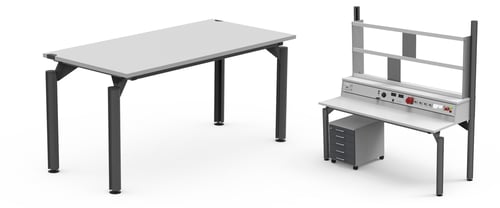Lean manufacturing is a methodology that focuses on improving efficiency and eliminating waste in processes. The concept originated in Japan and its main objective is to create the greatest value for customers with the least number of resources. One of the key concepts within lean manufacturing is "Muda", which is a Japanese term for waste or inefficiency.
In this article, we'll look at what exactly Muda means, what the different types are, and why it's so important to identify and eliminate it from your manufacturing processes. Understanding and eliminating Muda is a critical step to achieving greater productivity and efficiency, and thus becoming more competitive in the marketplace. So, let's take a closer look at this important concept and how it can help you optimize your processes.
Content
- What is Muda? Definition, origin, importance of elimination
- The seven types of waste by Taichi Ohno
- How to identify Muda in your processes
- Tips and tricks to involve employees in identifying waste
- How BeeWaTec helps with Muda elimination
- Benefits of eliminating Muda
- Conclusion
What is Muda? Definition, origin, importance of elimination
Muda is a Japanese term that means waste or inefficiency. In the context of lean manufacturing, Muda refers to all activities and processes that do not add value to the customer. This means that if an activity is considered Muda, it should either be eliminated or minimized because it only adds cost without benefit to the product.
The term Muda comes from the Japanese Toyota Production System (TPS), which was developed in Japan after World War II. Toyota, under the leadership of Taichi Ohno, created this system in response of the need to increase efficiency and reduce costs. Ohno identified various types of waste, which he called Muda, and emphasized their elimination as a key factor in achieving lean production.
Identifying and eliminating Muda is the foundation stone of lean manufacturing. Waste in the production process not only increases costs, but also slows down the entire process, reduces quality and negatively affects customer satisfaction. By eliminating Muda, we can achieve greater efficiency, faster lead times, better quality and overall lower costs. That's why it's important to constantly monitor and analyse processes, identify potential areas of waste and take the necessary steps to eliminate them. This is the key to achieving true lean manufacturing and remaining competitive on the market.
The seven types of waste by Taichi Ohno
Taichi Ohno, a pioneer of lean manufacturing, has identified 7 types of waste that occur in manufacturing processes. Each of these types of waste represents a specific area where inefficiencies and excess costs occur. Each type of waste is listed below, along with examples from real production processes.

1. Overproduction
Overproduction occurs when more products are produced than what is currently needed. This leads to excess inventory, which can tie up capital and storage space.
- Example: a production line produces more parts than ordered because it is trying to maximize machine utilization.
2. Waiting
Waiting includes all times when employees or machines are idle and waiting for the next step in the process.
- Example: a machine operator waits for the completion of a previous operation or for the delivery of material.
3. Transportation
Transportation waste refers to the unnecessary movement of materials or products between different points in the production process.
- Example: components are transported across the plant for further processing, which increases time and costs.
4. Over-processing
Over-processing means performing more steps or higher quality than required by the customer.
- Example: performing additional checks and adjustments that are not necessary to meet customer specifications.
5. Inventory
Excess inventory represents materials and products that are not directly needed and accumulate in the warehouse.
- Example: maintaining large inventories of raw materials and finished goods that may be damaged or obsolete.
6. Motion
Wasted motion involves unnecessary employee movements that do not add value to the product.
- Example: operators often have to walk or bend to reach tools or materials.
7. Defects
Defects include all products that do not meet quality requirements and must be repaired or discarded.
- Example: manufacturing defects resulting in the need to rework or dispose of defective parts.
By identifying and eliminating these seven types of waste, companies can significantly improve their efficiency, reduce costs and increase customer value.
How to identify Muda in your processes
Identifying Muda is a key step in achieving lean manufacturing. There are several practical tools and techniques that can help you identify and eliminate waste in your manufacturing processes.
Value Stream Mapping (VSM)
Value Stream Mapping (VSM) is a technique that visualizes all steps in the production process from start to finish. This allows you to identify steps that do not add value and represent waste.
- Example: using VSM you can detect redundant material movements between different workstations.
5S Method
5S is a method for organizing and maintaining the work environment. It consists of five steps: Seiri (Sort), Seiton (Set in order), Seiso (Shine), Seiketsu (Standardize), Shitsuke (Sustain).
- Example: 5S implementation helps identify and eliminate unnecessary tools and materials, reducing wasted motion and waiting.
Kaizen
Kaizen is continuous improvement through small, progressive changes. Involving all employees in identifying and solving problems is a key aspect of this technique.
- Example: regular Kaizen meetings can uncover waste in daily operations and suggest practical solutions.

DOWNLOAD NOW!
Checklist - How to identify Muda
Download this free checklist to help you identify and eliminate Muda from your processes.
Download for freeChecklist - How to identify Muda
After you have filled out and sent the form, you will receive the checklist immediately by e-mail.
Tips and tricks to involve employees in identifying waste
Education and training
- Ensure that all employees have a basic understanding of lean manufacturing principles and specifically the concept of Muda.
- Organise training and workshops on waste identification.
Encourage collaboration
- Create a culture of open communication where employees are not afraid to share their ideas and concerns.
- Encourage teams to meet regularly to discuss possible improvements.
Reward and motivate
- Recognize and reward employees for identifying and suggesting ways to eliminate waste.
- Implement motivational programs that encourage active involvement in continuous improvement.
How BeeWaTec helps with Muda elimination
BeeWaTec offers a wide range of designs and accessories that can effectively help eliminate waste (Muda) in production processes. Here are some specific products:
1. Modular pipe systems
-
These systems allow workstations and production lines to be easily and quickly customized to meet current needs, eliminating unnecessary steps and movements.
2. Racking and storage systems
-
They optimize the storage of materials and components, reducing excess inventory and facilitating access to needed items.
3. Transport trolleys and conveyors
-
Efficiently transport materials and products between different parts of the production process, minimizing unnecessary transportation and waiting.
4. Ergonomic workstations
-
Adaptable workstations ensure optimal arrangement of tools and materials, reducing unnecessary motion and increasing productivity.
5. Assembly tables and stands
-
Allow for quick and easy assembly of components, minimizing over-processing and shortening the production cycle.
In this way, BeeWaTec supports companies in their pursuit of lean manufacturing and the efficient elimination of Muda, leading to higher productivity and lower costs.

Benefits of eliminating Muda
Eliminating Muda, or waste in production processes, brings several benefits that have a positive impact on efficiency, productivity, economic performance and the work environment.
Increased efficiency and productivity
Eliminating waste leads to smoother and more efficient processes that enable faster and higher quality production. Without unnecessary steps, waiting or excessive labour, work processes become smoother and less prone to errors.
- Reduced cycle time: by eliminating wasteful activities such as waiting and over-processing, the overall time it takes to complete a production cycle is reduced.
- Higher quality: by eliminating defects and unnecessary steps, the quality of the final product is improved, leading to fewer complaints and higher customer satisfaction.
- Better use of resources: more efficient processes mean better use of materials, machines and human resources, leading to higher productivity.
Economic benefits
The elimination of waste has a direct positive impact on the economic performance of an organisation. Lower costs and higher productivity contribute to an improved financial position of the company.
- Cost reduction: eliminating Muda reduces costs associated with overproduction, inventory, transportation and repair of defective products.
- Increased profit: more efficient processes lead to higher production capacity and faster delivery of products to market, which increases sales and profits.
- Inventory optimization: reducing excess inventory frees up funds that can be invested in other areas of the business.
Improving the working environment and employee morale
Eliminating waste not only improves efficiency and economic performance, but also positively affects the work environment and employee morale.
- Increased employee satisfaction: a more efficient and organised working environment increases employee satisfaction, making employees feel more engaged and valued.
- Reduced stress: eliminating inefficient and unnecessary activities reduces stress and pressure on employees, which contributes to a better working atmosphere.
- Fostering collaboration: methods such as Kaizen and 5S encourage teamwork and the involvement of all employees in the continuous improvement process, which improves communication and teamwork.
Overall, eliminating Muda brings comprehensive benefits that lead to greater efficiency, productivity, economic growth and an improved work environment. As a result, the company becomes more competitive and better prepared to face challenges in the marketplace.
Conclusion
The elimination of Muda is a key element of lean manufacturing that brings many benefits. In this article, we have explored the definition of Muda, its origin and the importance of elimination, the different types of waste and methods to identify and eliminate them. We have paid special attention to tools and techniques that can greatly assist in detecting and eliminating inefficiencies. Increasing efficiency and productivity starts today - take the first step towards lean manufacturing!
Introducing Muda In Your Company
With our modular system you can implement any solution you need. Discover your possibilities, existing solutions or build your own material flow system with BEEVisio in 3D.




_Web_01_01.jpg?width=1240&name=Beewatec-3-(37)_Web_01_01.jpg)


